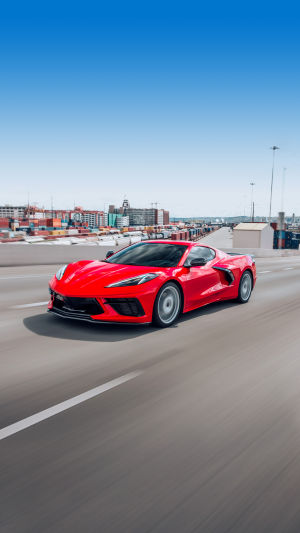Since the inception of the automobile, car enthusiasts have sought vehicles that push the boundaries of performance and style. These automotive marvels, known as supercars, have captivated the imagination of speed aficionados for decades.
Combining cutting-edge technology, awe-inspiring design, and blistering performance, supercars have become the epitome of automotive excellence.
The roots of the supercar can be traced back to the early 20th century when automotive pioneers began experimenting with high-performance vehicles. However, it was in the 1950s and 1960s that the concept truly took off. With advancements in engineering and a surge in motorsports, manufacturers started producing cars that elevated the standards of speed and style.
One of the most iconic supercars of that era was the legendary Ferrari 250 GTO. Introduced in 1962, this masterpiece from Enzo Ferrari's stable combined exquisite design with a powerful V12 engine. With its racing pedigree and limited production numbers, the 250 GTO became a symbol of automotive exclusivity and remains one of the most coveted cars ever made.
In the 1970s, the Lamborghini Countach burst onto the scene, redefining the concept of what a supercar could be. With its futuristic and angular design, scissor doors, and powerful V12 engine, the Countach became an instant icon. Its radical appearance and mind-boggling performance captivated enthusiasts worldwide, cementing Lamborghini's status as a supercar manufacturer.
The 1980s witnessed the rise of the supercar in popular culture. The Ferrari Testarossa, with its wide stance, side strakes, and aggressive lines, became an automotive icon and a symbol of wealth and success. Meanwhile, the Porsche 959 showcased groundbreaking technology, including all-wheel drive and adjustable suspension, propelling it to the forefront of automotive innovation.
As the 20th century progressed, supercar manufacturers continued to push boundaries. The McLaren F1, introduced in 1992, shattered speed records with its blistering top speed of 240 mph (386 km/h). Its carbon fiber construction and three-seat layout further solidified its status as a technological marvel.
The new millennium brought a wave of hybrid supercars, combining performance with environmental consciousness. The Porsche 918 Spyder, Ferrari LaFerrari, and McLaren P1, known as the "holy trinity" of hybrid hypercars, showcased the capabilities of electric power combined with traditional combustion engines.
In recent years, manufacturers have focused on refining aerodynamics and harnessing the potential of electric power. The Bugatti Veyron, with its astonishing top speed of 267.8 mph (431 km/h), and its successor, the Chiron, continued to push the limits of speed and luxury.
The rise of electric vehicles has also influenced the supercar landscape. The Tesla Roadster, with its mind-bending acceleration and zero-emission credentials, challenged traditional notions of what a supercar could achieve.
When discussing iconic supercars, it is impossible not to mention the likes of the McLaren Senna, the Lamborghini Aventador, the Ferrari 458 Italia, and the Ford GT. These cars embody the spirit of speed, performance, and exclusivity that defines the supercar genre.
Supercars have transcended their role as mere vehicles and have become symbols of aspiration and dreams. They represent the pinnacle of automotive engineering, combining breathtaking performance, striking design, and the thrill of speed.
As we look to the future, the world of supercars continues to evolve. Advances in electric propulsion, autonomous driving, and alternative fuels will undoubtedly shape the next generation of automotive icons. One thing, however, remains certain: the allure of the supercar, with its promise of exhilarating power and unmatched style, will continue to captivate generations to come.





